The People Near Transit (PNT) report establishes the levels of urban transit services in Pune Metropolitan Region and the accessibility gaps that affects its residents.
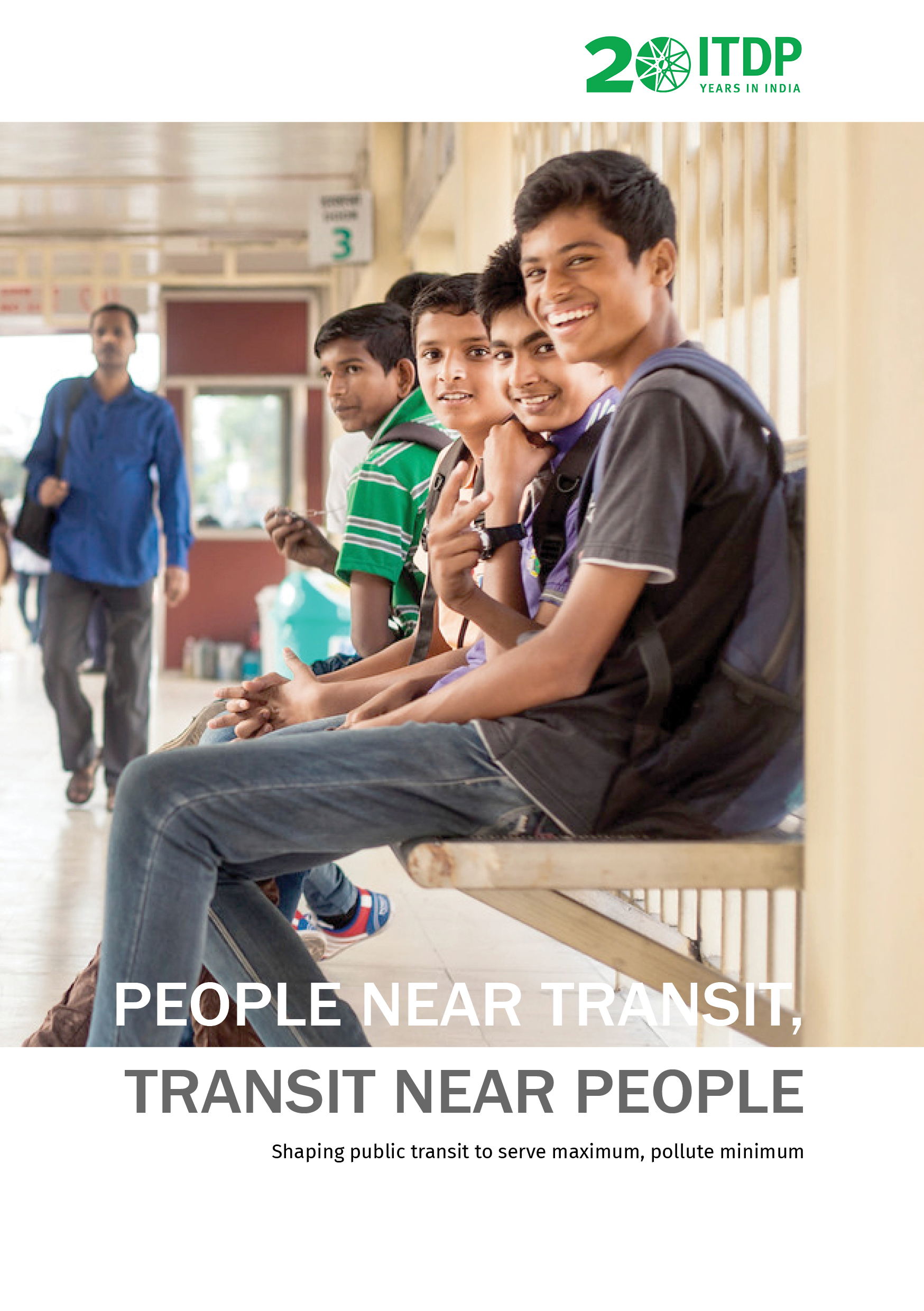
by
The People Near Transit (PNT) report establishes the levels of urban transit services in Pune Metropolitan Region and the accessibility gaps that affects its residents.

Cities across the globe are acknowledging the importance of the pedestrian. The activity of walking, either as part of one’s transit, fitness regime or for leisure, is being increasingly associated with a city’s social life. The measures a city takes for the safety of its pedestrians is now becoming a deciding factor in its popularity. Some cities have gone on to completely cut off access to vehicles from some of their streets, converting them to pedestrianised areas.
Although the idea of creating pedestrian-only streets seems modern, it has been tested and tried out in various cities several times in the past and continues to work well. Despite initial resistances, many of these projects have proven to be great successes.
Pedestrianisation in India and Across the Globe aims to learn from the best practices in pedestrianisation across the world.

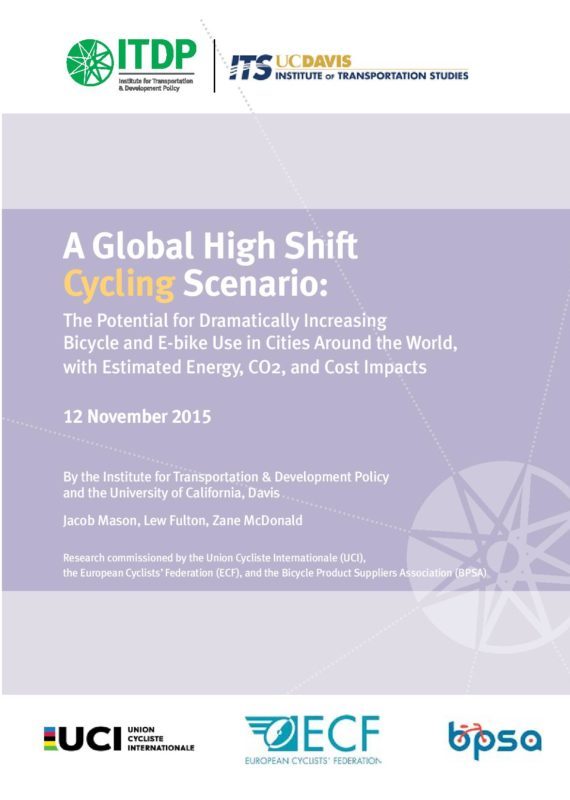
The Potential for Dramatically Increasing Bicycle and E-bike Use in Cities Around the World, with Estimated Energy, CO2, and Cost Impacts
Cycling plays a major role in personal mobility around the world, but it could play a much bigger role. Given the convenience, health benefits, and affordability of bicycles, they could provide a far greater proportion of urban passenger transportation, helping reduce energy use and CO2 emissions worldwide.
This report presents a new look at the future of cycling for urban transportation (rather than recreation), and the potential contribution it could make to mobility as well as sustainability. The results show that a world with a dramatic increase in cycling could save society US$24 trillion cumulatively between 2015 and 2050, and cut CO2 emissions from urban passenger transport by nearly 11 percent in 2050 compared to a High Shift scenario without a strong cycling emphasis.
The report builds on the 2014 study A Global High Shift Scenario: Impacts and Potential for More Public Transport, Walking, and Cycling with Lower Car Use. That report provided a global assessment of the potential for increasing travel on sustainable, efficient modes while concurrently developing cities that are far less car-dependent. However, the role of cycling in the previous study could be considered relatively minor, with the global average urban mode share increasing by three percentage points in 2030 (from 3 to 6 percent of total travel). This report explores just how much is possible if we study cycling in more detail using the same approach. The result is the most comprehensive picture ever of global urban cycling activity.
Download report
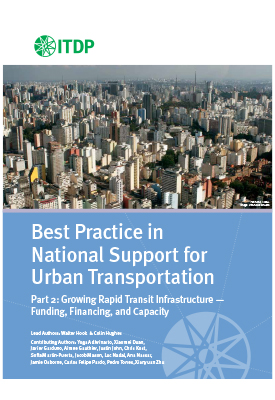
Large cities of the world require strong coverage of rapid transit networks to ensure they remain competitive, and that local communities have a healthy environment, vibrant urban economy, and an equitable, high quality of life for all residents. Many cities—especially those with growing populations, incomes, and/or large infrastructure deficits—have not, however, built rapid transit at the scale and rate needed to meet mobility needs. This paper is Part 2 in a series of research papers that explores how countries can grow their rapid transit infrastructure.
Growing Rapid Transit Infrastructure: Funding, Financing, and Capacity, analyzes how the funding practices, financing practices, and institutional capacity impact a country’s ability to deliver rapid transit effectively. While the paper draws on the rapid transit database used in Part 1, it also uses an additional database compiled by ITDP with complete funding and financing details for 123 urban rapid transport projects, as well as data on urban transport capacity. To understand which countries are the most successful at growing their rapid transit relative to their urban populations, the paper focuses on the annual change in a country’s RTR, looking specifically at the period from 2000 to 2014. Countries are then evaluated according to this metric.
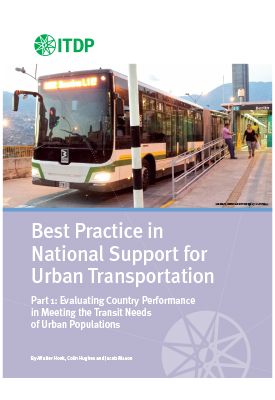
Part 1: Evaluating Country Performance in Meeting the Transit Needs of Urban Populations
With the world’s urban population projected to increase from 3.4 to 6.4 billion between now and 2050, the sustainability of the earth will depend on these new urban residents living as sustainably as possible. One key element of this will be making sure the majority of these new urban residents can live well without depending on the use of the private automobile. Success in large measure will depend on whether the expansion of urban mass transit systems will be able to keep pace with this rapidly growing urban population. Many innovative cities have, on their own initiative, brought about significant long term shifts away from private car use. Overall, however, cities have not expanded their mass transit infrastructure at a pace sufficient to meet the growing needs of their new urban residents, or to stem the risk of irreversible climate change.
In a few countries, like Colombia and Mexico, national governments have played an important role making sure that cities have the financing and technical assistance they need to meet their growing mobility challenges.This paper explores where, whether, and how cities have obtained sufficient help from their national governments to meet their growing urban mobility challenges. With the growing risk of permanent damage to the earth from climate change, it has become imperative to figure out whether there is a role for national governments, and then what that role is, in scaling up municipal level successes to achieve national level changes in urban mobility patterns.
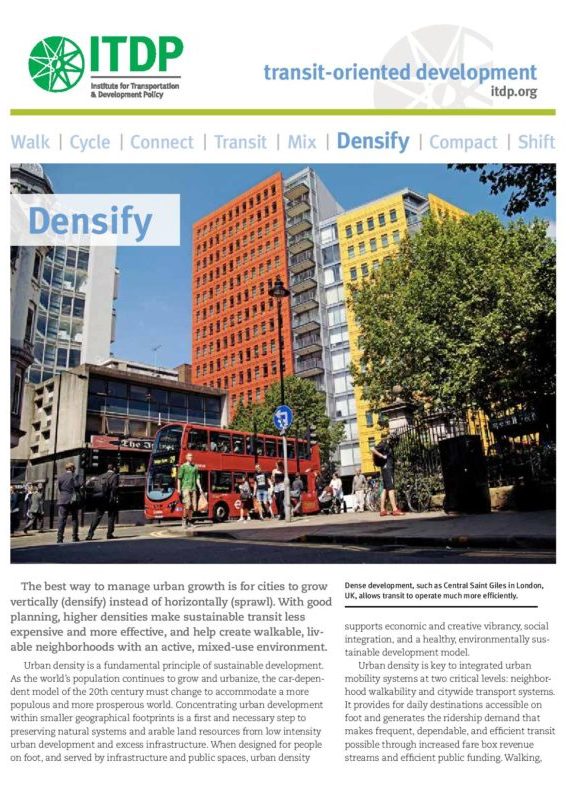
Urban density is a fundamental principle of sustainable development. As the world’s population continues to grow and urbanize, the car-dependent model of the 20th century must change to accommodate a more populous and more prosperous world. This brief lays how well designed density creates vibrant, sustainable urban spaces. Density is one the the Eight Principles for designing urban transport and development.
For more information on density from ITDP, see the TOD Standard and watch the video, It’s Smart to be Dense.
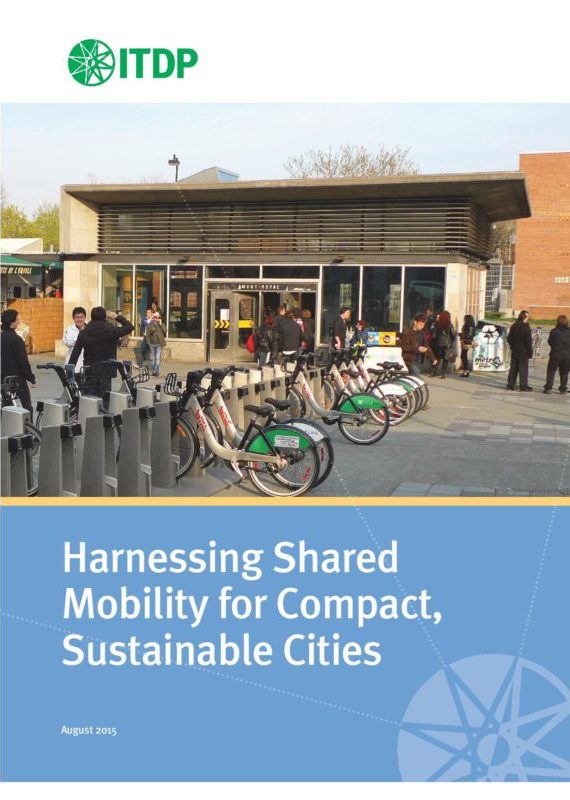
In the past decade, the world has seen car sharing go mainstream, bike sharing become a global trend, and hundreds of startups stake their claim to reinventing transport. The new systems, collectively known as shared mobility, reflect the rise of both the on-demand and sharing economies. These dual economic phenomena are changing the way everyone from car owners to public transport users make travel choices. This policy brief addresses how shared mobility is affecting the urban transport landscape and suggests ways governments can guide the industry’s growth toward supporting a sustainable, people-centered city.
A growing range of shared mobility systems has emerged to fill gaps in the transport network
by offering ever more nuanced options for different travel needs. These include new options for door-to-door travel, “last/first mile” trips to destinations and nearby transit stations, special trips, and reaching underserved areas. Innovations in payment structures, variable routes, flexible schedules, and vehicle size all contribute to the new diversity of transit choices.
Yet shared mobility is just one of the ways the urban landscape is shifting. As the world’s rapidly growing cities rethink their transport and land use policies, with increased focus on sustainability, transit-oriented development and road safety, both the benefits and shortcomings of shared mobility deserve attention as part of long-term planning.
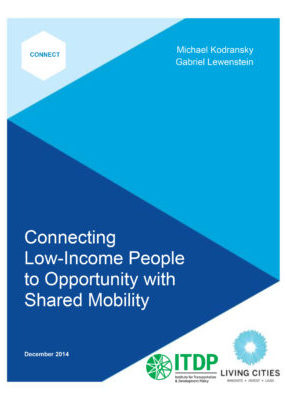
This report was produced by ITDP for Living Cities and is reprinted here with permission. More information is available at LivingCities.org.
Shared-mobility programs like bike-share and car-share have significant potential to benefit low-income users, yet often do not reach that population. This report explores the specific opportunities and challenges facing shared mobility programs in expanding services to low-income communities.
In the last decade, shared mobility services such as bike-share, car-share and ride-share have taken off across the United States as a complement to local public transit and an alternative to private car ownership. As these models have developed, many have explored how the emerging field can more directly benefit low-income individuals, who often face longer and more costly travel times. However, current usage of shared mobility systems among low-income communities remains lower than usage by the general population overall.
This report is a survey of existing shared mobility strategies and their attempt to expand services to low-income individuals. It is our hope that the findings can inform operators, government agencies, funders, non-profit organizations and others as they try to tap into the potential of shared mobility strategies to improve the lives of low-income individuals.
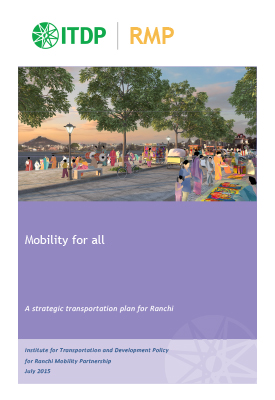
Ranchi, the capital city of Jharkand is fast urbanising. Though the state remains largely rural, Ranchi and the other cities have been rapidly growing with the influx of people from the hinterland in search of opportunity. These cities need to be planned and manage to provide a safe, affordable, attractive and inclusive environment for the citizens.
With a good transport system comes better connect between people and also more sustainability- socially, economically and environmentally.
The lack of a formalized public transport system in Ranchi has led to dependence on private vehicles and paratransit for day-to-day travel, congestion and safety issues. While most of the new transport initiatives deal with road widening and flyovers, there have been no concrete efforts to address the people’s need and propose genuine solutions.
The Ranchi Mobility Charter, developed by the Ranchi Mobility Partnership led by ITDP calls for a development model that focuses on a high-quality bus based transport system, parking management and a pedestrian friendly outlook.
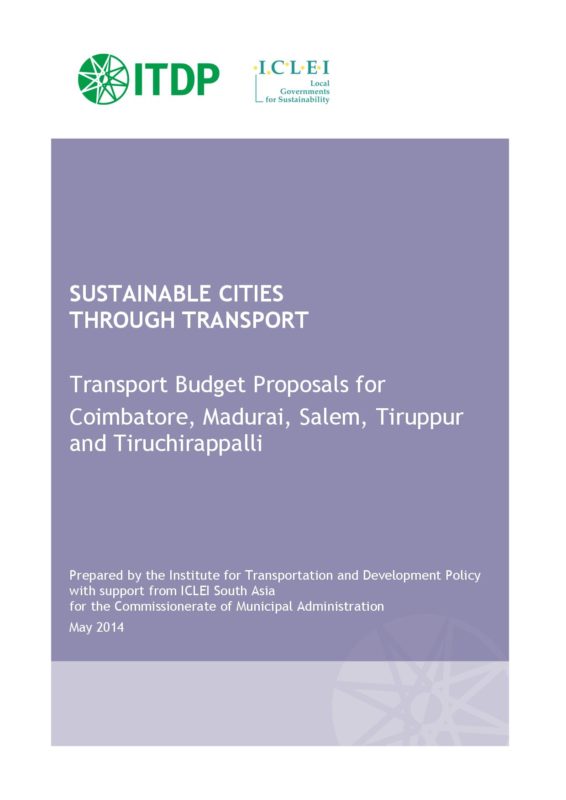
The cities of Tamil Nadu are witnessing rapid motorisation, along with increased congestion and pollution. Public transport service is often unreliable, infrequent, and inadequate to meet demand, resulting peak-hour overcrowding and a shift toward informal paratransit services. Walking and cycling are critical modes for many urban residents in Tamil Nadu, providing essential low-cost mobility. However, dedicated pedestrian and cycle facilities are almost non-existent in most cities.
To address these mobility challenges, the Commissionerate of Municipal Administration (CMA) launched Sustainable Cities through Transport, a planning process to develop municipal transport budgets for five of the largest city corporations in Tamil Nadu after Chennai including Coimbatore, Madurai, Tiruchirappalli, Tiruppur, and Salem.
The process was organised in partnership with the Institute for Transportation and Development Policy (ITDP) and with support from ICLEI–SA South Asia, adequately facilitated by inputs from municipal teams in the cities involved. The process sought to identify ways to provide safe, affordable, quick, comfortable, and reliable access for the growing number of city residents. In harmony with the 2006 National Urban Transport Policy, the process seeks out to achieve a more equitable allocation of road space by incorporating a focus on sustainable transport in the planning and budgeting stages.